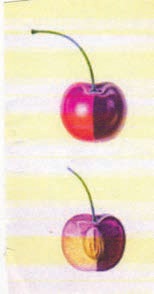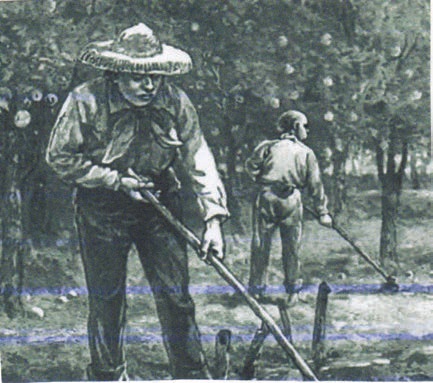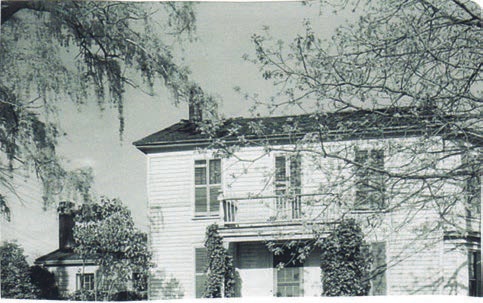
| What is Flavor and Fortune? |
| How do I subscribe? |
| How do I get past issues? |
| How do I advertise? |
| How do I contact the editor? |
Read 13374564 times
Connect me to:
| Home |
| Articles |
| Book reviews |
| Letters to the Editor |
| Newmans News and Notes |
| Recipes |
| Restaurant reviews |
| Article Index (all years, slow) |
| List of Article Years |
| Article Index (2026) |
| Article Index (last 2 years) |
| Things others say |
| Related Links |
| Log In... |
| Authors |
| Categories & Topics |
Ah Bing and His Cherries
| by Jacqueline M. Newman |
Food in History
Spring Volume: 2019 Issue: 26(1) pages: 25 to 26
In my inbox and in the public domain, is a story about a Chinese immigrant and a fruit named for him that we love. Thanks to a Chinese friend who sent it on to us, coming via Florence Olson Ledding to my friend. She was a lawyer and step-daughter of his employer named Seth Lewelling. This rather unknown piece of Chinese history always comes to mind as we enjoy Bing cherries. Ah Bing was the first to tend them in the US yet his life here was cut short because of American racism. How did this Chinese foreman tending his beloved cherries and then left the country to visit his wife and children could not or would not return; we’ll never know which.

He was six feet tall and a Northern Chinese, the foreman who worked for the Lewelling and family who were Quakers with strong abolitionist sentiments. The story about them starts before the Civil War when their brother, Henderson came to build a home in Iowa. He was known as the “main ticket office for the underground railroad.” In the mid-1800s, his family headed west with seven hundred fruit trees arriving in Milwaukie, Oregon establishing the West Coast’s first nursery. Seth soon joined him there.
At that time, Oregon’s population was booming and some settlers were looking for post-Gold Rush opportunities while others had their eyes on the Pacific Northwest’s rich farmland. With these hundreds of trees, the Lewellings established a thriving nursery business. Henderson Lewelling soon peeled off to Honduras to start an ill-fated utopian colony, but Seth put down roots with orchards of plums, apples, and other fruits. He kick-started Oregon’s fruit-growing industry, and this story is thanks to that effort because Oregon was flourishing but needed labor.

All across the West, Chinese workers were building train tracks and working mines, orchards, and farms, were paid less while their industriousness was put down because it hurt Americans wages stealing their jobs. It was in the American West, writes immigration historian Erika Lee, that “arguments in support of Chinese exclusion arose.”
In 1892, the federal government passed the Chinese Exclusion Act barring immigration of Chinese laborers for decades to come. Meanwhile, violence against Chinese immigrants flourished in the Pacific Northwest, and in 1885, city leaders in Tacoma, Washington became local leaders driving Chinese populations out of town. Many of their homes were burned during this time and after it. Two years later in Oregon, thirty-four Chinese miners were murdered. Called the Hells Canyon Massacre, the culprits never punished.
It was then that Ah Bing worked on Seth Lewelling’s farm. This man of Manchu descent, hailed from the north of China. His height and his background made him very unlike the majority of Chinese immigrants. They were mainly from the Guangdong Province and he did work for Lewelling for more than thirty years sending money back to his wife and Children in China. Ledding remembered him singing a popular song of the day always in a mournful minor key.

Seth’s house was where Ah Bing and others were sheltered for years, it was then demolished in 1940. As the foreman of Lewelling’s orchard crew, he supervised more than thirty men, and worked closely with Seth Lewelling grafting, propagating, and caring for his trees.
The Bing cherry, Ledding recalls, surfaced one day when Lewelling and Ah Bing walked through Seth’s rows of cherry trees. Each of these men did maintain separate rows, and in Ah Bing’s there was a marvelous new type of cherry. Someone suggested to Lewelling that he should name the cherry after himself, but he protested. He said he already had one named for himself, and said, “I’ll name this one for Bing,” Ledding recalls, and continued, “it a big cherry and Bing is big and it is in his row, so that will be its name.”
Other stories portray Ah Bing as more central to the development of this particular cherry. In 1992, the agricultural journal The Oregon Grower, relates that Lewelling assigned a collection of ‘Black Republican’ cherry seedlings to Ah Bing to care for; and that was in 1875. Bing’s cultivation resulted in the Bing Cherry; it did pass his name down in horticultural history.
The Bing cherry went on to win prizes and did sell for the princely sum of a dollar a pound. Still Ah Bing’s contribution could not save him from American racism. During the years of violent ant-Chinese riots, Lewelling sheltered Ah Bing and many of his Chinese crew in Lewelling’s home. Perhaps it was the fevered environment that spurred Ah Bing to return to China to visit his family. He was longing to go home to visit them; he always talked about them, Ledding said. So in 1889 he did return to China for a visit. The Chinese Exclusion Act had already passed and legislators actively plugged loop holes to make it more restrictive. Ah Bing never returned to the US, and years later Ledding did say the Chinese Exclusion Act was why he did not come back to the US.
The rest of Ah Bing’s story is lost to history. After working for decades in the US, perhaps he wanted to stay in his homeland as there he would not be threatened due to his race. Maybe he did try to return to the US but was rejected. Americans encounter his legacy every day, seeing the name ‘Bing’ on their bags of cherries.

Copyright © 1994-2026 by ISACC, all rights reserved
Address
3 Jefferson Ferry Drive
S. Setauket NY 11720